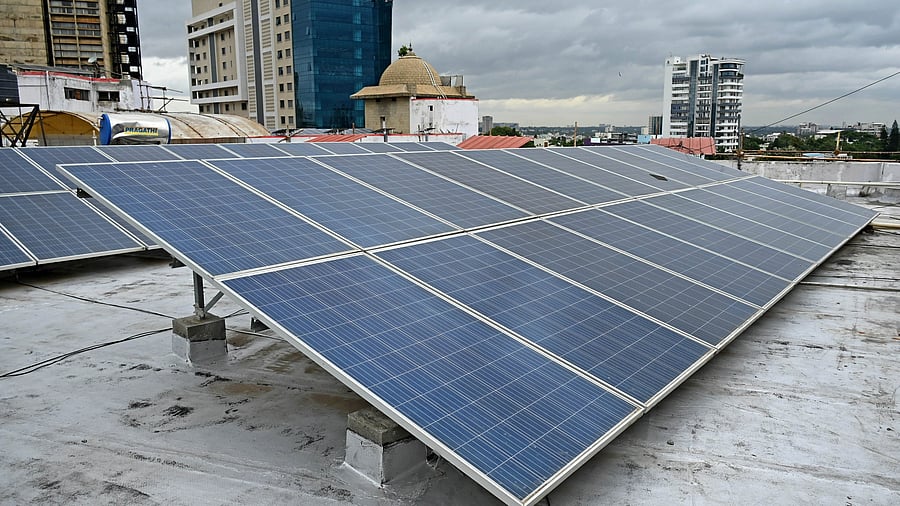
Rooftop solar panels atop a building.
Credit: DH PHOTO
Mumbai: The ambitious Pradhan Mantri Surya Ghar Yojana (PMSGY) has transformed India’s residential rooftop solar segment, however, it faces supply and financial hurdles needs, according to a new report by the Institute for Energy Economics and Financial Analysis (IEEFA) and JMK Research & Analytics.
In just a year of launch, it has added 4.9 GW capacity, the report points out.
The report highlights that as of July 2025, PMSGY has witnessed significant traction, with over 57.9 lakh applications submitted for residential rooftop solar installations.
However, despite a near fourfold increase in applications between March 2024 and July 2025, only 13.1 per cent of the target of 1 crore (10 million) installations and just 14.1per cent of the allocated INR 65,700 crore
(USD 7.5 billion) in subsidies released till July 2025. Given this context, achieving the FY2027 target of 30GW capacity continues to be seen as a considerable challenge.
Under PMSGY, Gujarat leads all states with the highest installed residential rooftop solar capacity of 1,491MW, followed by Maharashtra, Uttar Pradesh, Kerala, and Rajasthan. These states together account for approximately 77.2 per cent of the total installed capacity (4,946 MW) under the scheme till July 2025.
“Establishing clear, time-bound rooftop solar capacity targets at the state level is essential for creating a coherent vision and ensuring effective policy execution,” says Vibhuti Garg, Director, IEEFA - South Asia, and a contributing author.
“PMSGY has steadily expanded its policy framework to speed up residential rooftop solar adoption. Since 2024, it has rolled out a nationwide capacity-building programme to train over three lakh people and help vendors, utilities and financiers upskill,” says Jyoti Gulia, Founder, JMK Research, and a contributing author of the report.
The “Innovative Projects” component provides grants covering up to 60 per cent of project costs to support pilot initiatives and new business models. Meanwhile, a new digital Domestic Content Requirement ensures verified use of domestic materials in solar modules. Additionally, states and Union territories are being encouraged to develop solar cities and model solar villages.
“However, low consumer awareness and access to finance remain significant barriers to the adoption of rooftop solar. Outdated perceptions of high upfront costs and maintenance persist, especially in rural areas,” says Prabhakar Sharma, senior consultant, JMK Research, and a co-author of this report.
Before the launch of the scheme last year, residential rooftop solar adoption was concentrated in the commercial and industrial segments, while the residential sector lagged due to high upfront costs and limited awareness. PMSGY addressed this gap by offering capital incentives and simplified procedures to make rooftop solar financially attractive for households.